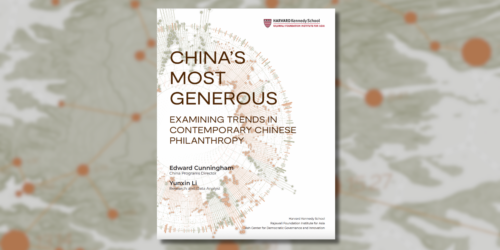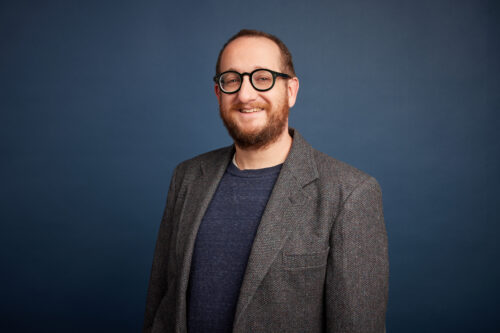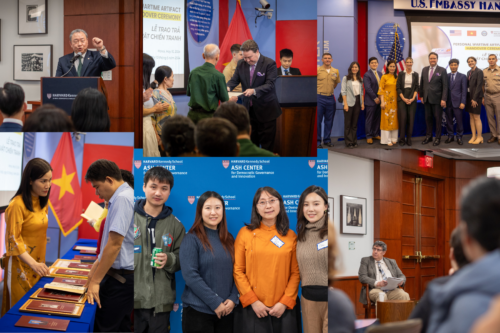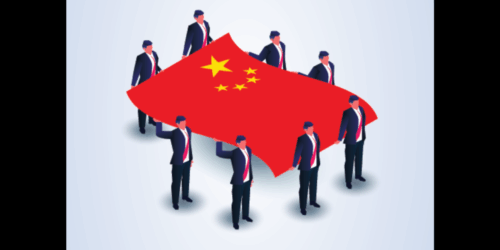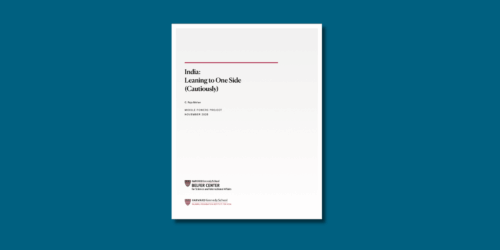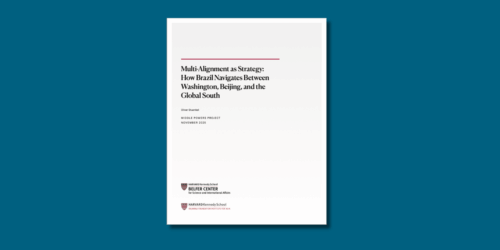Over a century ago, the Gilded Age tycoons of America realized that getting rich was the easy part. Giving away their fortunes would require an altogether new vision of how they wished to leave their imprint on society — all done without the guiding hands of professional philanthropic advisors or longstanding charitable foundations. Generations later, the totems of that age, the Carnegies and Rockefellers, have left their indelible mark on America through their charitable works. Now a new breed of super-wealthy, this time hailing from China — home to the world’s largest concentration of billionaires — is beginning to grapple with the demands of contemporary philanthropy.
Understanding the state of philanthropy in China and identifying trends in charitable giving among China’s wealthy is the focus of the Ash Center’s China Philanthropy Project, a new research effort established at the Ash Center in 2015 in part by the generous support of the Dalio Foundation. “The world is fixated on China’s growing wealth and economic might. It is evident in the US presidential campaign. It is evident in the development of new regional trade accords, but few people are thinking about China’s future role in global philanthropy,” said Edward Cunningham, director of the China Programs at the Ash Center, who is leading the project.
“The western philanthropic community has been trying to help push along the development of China’s philanthropic sector,” said Evan Kornbluh, a joint HKS MPP and HBS MBA ‘18 student, who worked closely with Cunningham on the China Philanthropy Project. In 2010, Bill Gates and Warren Buffet memorably traveled to China to encourage the country’s nascent philanthropists to open their wallets — but were largely rebuffed. Their visit failed to spark a surge in charitable giving at the time but, in the last few years, China’s wealthy have begun increasingly turning towards philanthropy.
To help visualize the current philanthropic landscape in China, Cunningham also teamed up with Peiran Wei (MPA/MC 2015), a research fellow at the Ash Center who previously worked as a reporter for Bloomberg where he helped develop the Bloomberg Billionaire’s Index for China. “We took a journalistic approach to developing the data for the project by examining all publicly available information on these philanthropists and then filling in gaps by independently verifying charitable contributions. By doing that, we were ultimately able to create a model for each individual built from the data we had uncovered.”
The project team wanted to create more than just a list of wealthy philanthropists, though, and set their sights on developing a more comprehensive database to identify trends in charitable giving. “Our ‘China’s Most Generous’ list is an attempt to shift the debate away from a focus on absolute wealth and towards bigger questions around generosity,” added Cunningham. The project team began collecting data on major philanthropic donations within China that occurred from September 2014 to August 2015. Specifically, they worked to identify donors through their professional background, type of giving, philanthropic causes supported, vehicle of support (direct donation, donation through another foundation, etc.), origin and destination of giving, and type of recipient organization to which they gave.
What they found was more than just a simple list of China’s newly wealthy and their pet charitable causes.
“I was most struck by this big imbalance in both geographic locations [of charitable giving] and philanthropic causes supported,” said Wei. “Looking at the data, education is the most supported field, encompassing almost two-thirds of philanthropists on our lists. If you closely examine these donations, you’ll see a lot of the large scale donations — by that I mean over 100 million yuan, which is about 16 million dollars — going to universities in China.”
While the scope of educational giving in China is hardly surprising, given that contributions to educational institutions in the US outpace all others except for giving to religious causes, the project team was surprised that environmental causes received so little support in comparison. Of China’s 100 most generous philanthropists included on the team’s list, only four contributed to environmental causes. “We’ve been reading reports every day about how bad the air pollution is in Beijing and Shanghai, and I’m very surprised there’s so little attention in that field,” said Wei.
Further research and analysis also revealed that giving in China was largely confined to wealthier, more industrialized provinces along the country’s east coast. While the state has channeled significant resources towards the country’s less developed areas in the west, charitable contributions have not followed. “I don’t think many philanthropists actually know that there’s so little attention being paid by the wealthy to places like Xinjiang or Tibet,” said Pei. “When they make donations, we suspect they tend to look at things and places around themselves.”
While China’s philanthropy sector has shown remarkable growth in recent years — the China Philanthropy Project’s initial survey included a total of $3.8 billion in donations in 2015 — China still lags far behind other countries in total philanthropic giving. Charities Aid Foundation, a British based nonprofit that publishes an annual ranking of global philanthropy, has consistently measured China near the bottom of its list. For a country with the second largest economy in the world, this gap between economic output and annual giving serves as a stark reminder that China’s philanthropic sector has considerable room to grow.
On the other hand, Kornbluh, who worked for a small educational nonprofit in China before returning to the US for graduate school has seen how the country’s wealthy have indeed started to turn to philanthropic giving. “The last couple years that I was working in China, we saw a really dramatic sea change in the level of interest from high net worth individuals in China, and a change in the culture starting to emerge in terms of how people in the business world in China were starting to think about philanthropy and social impact.”
Though the Chinese billionaire class may grab headlines today, it is important to remember that China’s modern wealth is only about two decades old. “Between 1949 and 1979, everything was essentially planned — all economic activities and all commercial activities are actually regulated by the government. There were essentially no private businesses, no private wealth,” adds Wei. Philanthropy was not the first thing on the minds of China’s emerging industrial and business elite. “After 1979, you see a lot of entrepreneurs emerging, but when they first become rich, the first thing they want to do is probably not giving away their newly acquired wealth.”
China’s elite is now maturing and becoming globally sophisticated, and therefore beginning to turn to philanthropy in greater force. “One of the trends we cited in the research is how China’s philanthropists are starting to professionalize,” said Kornbluh. The wealthy in China are creating foundations and beginning to think more strategically about how they will give in the future. “More people are hiring their own staff, they’re setting up websites, they’re drafting giving principles, and they’re moving away from what was a very ad-hoc process driven solely by individual interest or public relations demands,” he added.
The government will also have to reassess whether it wants to take steps to encourage philanthropy. “In China, individual giving enjoys very little effective tax incentive,” said Cunningham. China’s Ministry of Civil Affairs, mindful of the proliferation of nonprofits and other nongovernmental organizations in the country, makes registering philanthropic foundations a difficult task. “As a result the majority of Chinese donors often give directly from a corporation, give to government-affiliated recipients, and they give locally,” added Cunningham.
While China’s philanthropy sector continues to mature, Cunningham predicts that wealthy Chinese may become a force in global giving in the not too distant future. “We’ll end up seeing that as their personal experience becomes more global, as their children are educated abroad and they tend to buy and acquire foreign property and therefore live extended periods of time abroad, the social network of these newly wealthy tends to globalize. I think absolutely you will see the globalization of Chinese philanthropy.”
As China’s giving develops, Cunningham and his team will be watching to identify the latest philanthropic trends and understand how the country’s wealthy will cement their legacy for generations to come.
